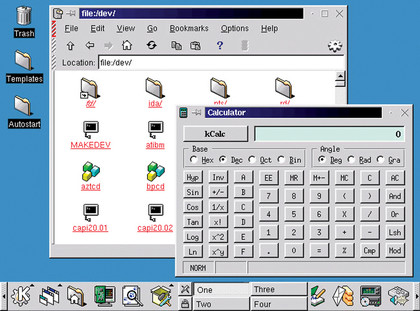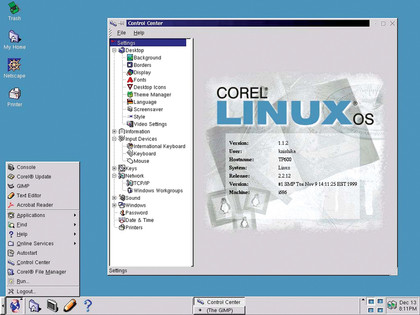The history of Linux: how time has shaped the penguin
A nostalgic look back at Linux, its distros and its colourful history
SLS was quite far ahead of its time, as it was the first Linux distribution to contain not only the 0.99 Linux kernel, but also the TCP/IP stack and the X Window System. However, SLS was a buggy beast at best, and it wasn't long before it was superseded by Patrick Volkerding's Slackware, which is the longest-running Linux distro.
SLS did more than just spawn Slackware. Due to the frustrations of its buggy interface, another user found the motivation to go it alone and create a new branch of the Linux distribution. In 1993, Ian Murdock went forth and gave birth to a system called The Debian Linux Release, which is allegedly named after his then girlfriend Debra Lynn and himself.
As Slackware evolved, companies sprung to life that supported the software. One that appeared in 1994 was the Software und System-Entwicklung, or as it was more commonly known, S.U.S.E Linux.

Another distro that saw the light of day, on 3 November, 1994, was called Red Hat Commercial Linux, created by Marc Ewing, and named after the coloured hat he wore whilst at University.
On 14 March, 1994, Linux 1.0.0 was launched with 176,250 lines of code. Thus was the start of something wonderful.
1995 to 1999
The arrival of Gnome and KDE

We take quite a leap in this next section, as the next five years saw some of the greatest Linux distributions arise from the 'big three', along with some very notable off-shoots of the Linux family tree, and including the infamous penguin attack of 1996. All this Linux history happening amid the dot com boom - incredible.
Get daily insight, inspiration and deals in your inbox
Sign up for breaking news, reviews, opinion, top tech deals, and more.
Jurix Linux was an interesting distro that was notable for a number of reasons: it was allegedly the first distro to include a scriptable installer, allowing an admin install to copy the installation process across similar machines. It was one of the first to fully support bootp and NFS, and one of the first Linux systems intended to use EXT2.
But what really made Jurix an important milestone in Linux history was the fact that it was the base system used for creating the SUSE Linux that we use today.
The Red Hat-based branch of Linux OSs were a fertile bunch during this five-year stretch. Notable releases such as Caldera, Mandrake, TurboLinux, Yellow Dog and Red Flag all began life from the sudden big bang of the ever-evolving Linux kernel, which was now, from 1995 to 1999, in versions 1.2.0 to 2.2.
In fact, version 2.0, launched in 1996, saw something like 41 releases in the series. It was this fast turn-around of the kernel, and the addition of some very important features that solidified the Linux operating system as the server OS of choice for IT professionals the world over.
Version 2.0, for instance, had features such as SMP support and better memory management, and could run on more types of processor. Version 2.2 heralded an improvement of SMP, support for the PowerPC architecture and a readonly capability for NTFS.
While on holiday in Australia, Linus visited a zoo, where he was bitten by a ferocious penguin. He was then infected with penguinitis, which makes the victim lay awake at night dreaming of penguins and becoming very fond of them - his words, not ours!
Anyway, Linus liked penguins - they are "goofy and fun", as he commented. As for the name Tux, again according to internet fable, this is from (T)orvalds (U)ni(X). So now you know.
Debian-based systems, although not as active as their Red Hat counterparts, began to grow, and favoured a more user-friendly server room approach to their distros. Being more desktop-orientated, Debian-based distros were often displayed on the front of the popular magazines at the time, showing off such notable entries as: Libranet, Storm, Finnix and Corel Linux.